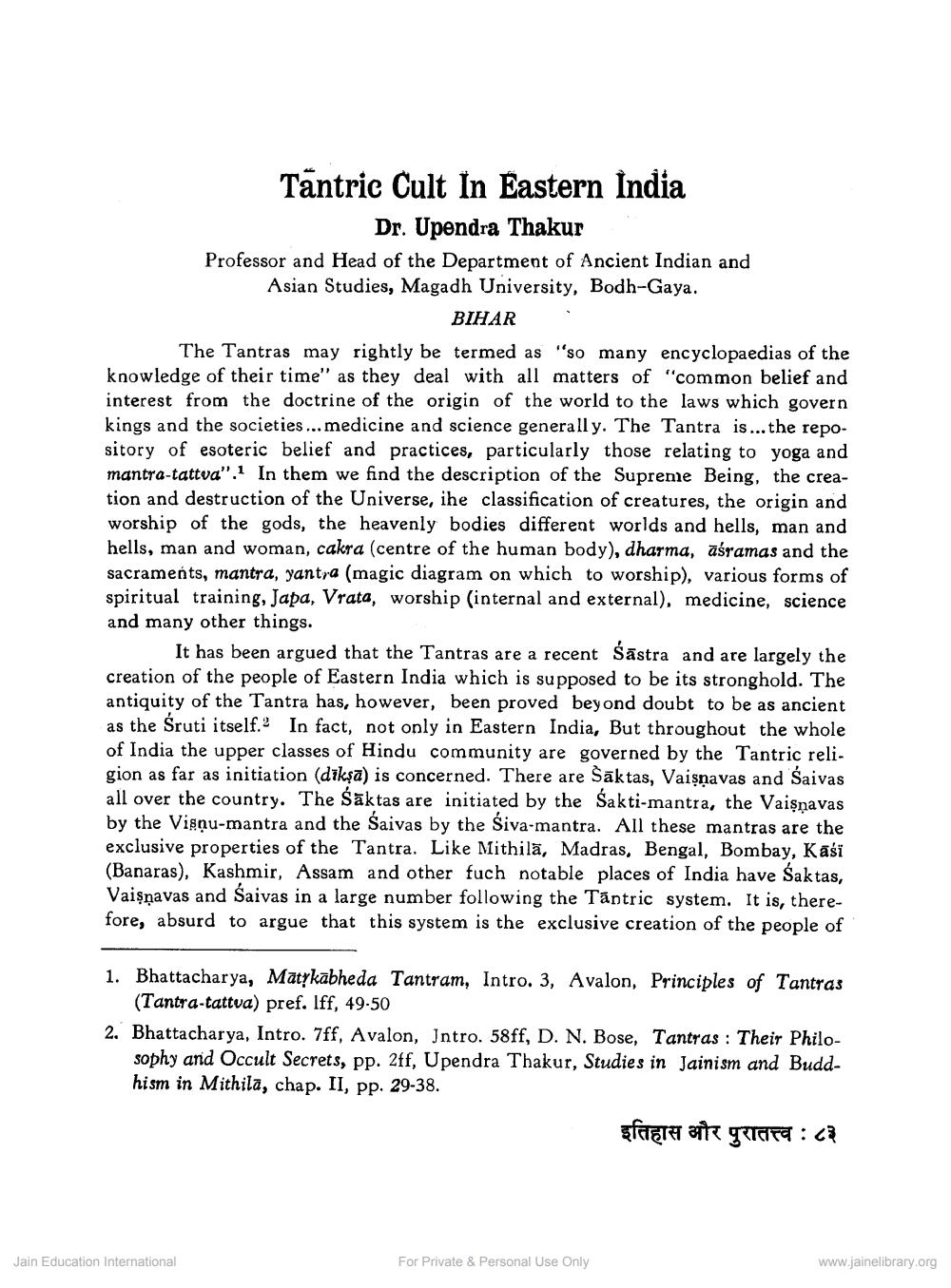Book Title: Tantric Culture Eastern India Author(s): Upendra Thakur Publisher: Z_Nahta_Bandhu_Abhinandan_Granth_012007.pdf View full book textPage 1
________________ Tāntric Cult în Eastern India Dr. Upendra Thakur Professor and Head of the Department of Ancient Indian and Asian Studies, Magadh University, Bodh-Gaya. BIHAR The Tantras may rightly be termed as "so many encyclopaedias of the knowledge of their time" as they deal with all matters of "common belief and interest from the doctrine of the origin of the world to the laws which govern kings and the societies ... medicine and science generally. The Tantra is...the repository of esoteric belief and practices, particularly those relating to yoga and mantra-tattva". 1 In them we find the description of the Supreme Being, the creation and destruction of the Universe, ihe classification of creatures, the origin and worship of the gods, the heavenly bodies different worlds and hells, man and hells, man and woman, cakra (centre of the human body), dharma, āśramas and the sacraments, mantra, yantra (magic diagram on which to worship), various forms of spiritual training, Japa, Vrata, worship (internal and external), medicine, science and many other things. It has been argued that the Tantras are a recent Śāstra and are largely the creation of the people of Eastern India which is supposed to be its stronghold. The antiquity of the Tantra has, however, been proved beyond doubt to be as ancient as the Śruti itself. In fact, not only in Eastern India, But throughout the whole of India the upper classes of Hindu community are governed by the Tantric religion as far as initiation (dīkşa) is concerned. There are Sāktas, Vaişņavas and Saivas all over the country. The sāktas are initiated by the Śakti-mantra, the Vaisnavas by the Visņu-mantra and the Saivas by the Siva-mantra. All these mantras are the exclusive properties of the Tantra. Like Mithilā, Madras, Bengal, Bombay, Kasi (Banaras), Kashmir, Assam and other fuch notable places of India have Saktas, Vaişņavas and Saivas in a large number following the Tantric system. It is, therefore, absurd to argue that this system is the exclusive creation of the people of 1. Bhattacharya, Matykābheda Tantram, Intro. 3, Avalon, Principles of Tantras (Tantra-tattva) pref. Iff, 49.50 2. Bhattacharya, Intro. 7ff, Avalon, Jntro. 58ff, D. N. Bose, Tantras : Their Philo sophy and Occult Secrets, pp. 2ff, Upendra Thakur, Studies in Jainism and Buddhism in Mithila, chap. II, pp. 29-38. इतिहास और पुरातत्त्व : ८३ Jain Education International For Private & Personal Use Only www.jainelibrary.orgPage Navigation
1 2 3 4 5 6 7
